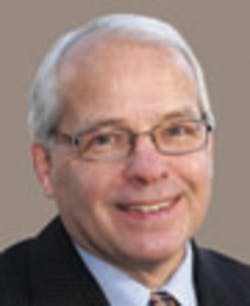The U.S. medical device community leads the world in innovation. But maintaining that leadership role will require improved communications among the industry, the public, and government officials.
That is the conclusion of Dean Kamen and Thomas Fogarty at a panel discussion at MD&M East May 23 in Philadelphia. In response to questions from panel moderator Maria Fontanazza, managing editor at MD+DI Medical Device and Diagnostic Industry, Fogarty admonished attendees not to be discouraged: “Keep the faith,” he said, adding, “Continue to be leaders…we ain’t dead.”
Kamen offered a more optimistic picture than “not dead,” although he did say the industry faces unnecessary regulatory burdens. Politicians like to take shots at the industry, he said, but he emphasized there are no medical miracles without reasonable costs and risks. “Everything that’s valuable people pay for,” he said, adding, “Medical innovation requires serious investment.”
Kamen noted that every human endeavor entails risk. We could eliminate automobile accidents, he said: Impose a speed limit of 3 mph and make everyone drive bumper cars. But despite 40,000 auto accident fatalities per year, we have not chosen to shut down the highway system. He suggested that if we are willing to accept such risk to continue driving, why should we not accept one bad outcome related to a medical innovation that otherwise saves 10,000 lives. The problem, he said, is that political leaders use that one bad outcome to grandstand.
When asked by Fontanazza what he would do if he were FDA commissioner, Fogarty said the commissioner is seriously compromised. Kamen said he does not necessarily blame the worker bees in the FDA but added it is likely that perverse incentives drive perverse outcomes. The FDA’s incentive is to make sure nothing bad happens—and the way to do that, Kamen said, is don’t let anything happen.
Fogarty also took issue with the press for focusing on bad outcomes and ignoring the benefits of the medical device industry. A downside of the industry being treated as evil and nasty, he said, is that young people will have no one in the industry to emulate and no incentive to enter the industry. He also commented on medical schools, saying they are good at science but not necessarily so good at technology. “We don’t help many humans by operating on mice,” he said.
As for advice, Fogarty said, “Never give up.” Projects take longer than you think, he said, adding that your viewpoint should be, “I’m going to make this work no matter what.”
The regulatory tension could be poised to become worse, as the FDA looks to extend its authority to regulate smart-phone apps that have medical applications. The FDA proposes to regulate a mobile device used as an accessory to a medical device that that agency already regulates or an app that would transform a mobile communications device into a regulated medical device by using attachments such as sensors. Suggesting that politicians, if not administrators and regulators, understand the potential problems, Congress is looking at legislative efforts to slow the FDA’s potential regulation of the apps, according to a May 18 report in CQ Today Online News.
Nevertheless, vigilance remains necessary, and the industry itself will need to be aggressive in getting its story out. Kamen noted that the U.S. public needs to be educated to encourage politicians to provide the FDA with the right incentives. “The public must understand that if we are to raise the bar on humanity, we must take some reasonable risk,” he said, concluding, “We are all busy, but unless this industry has the voice to discuss alternatives, then shame on us.”
Rick Nelson
Executive Editor
[email protected]

